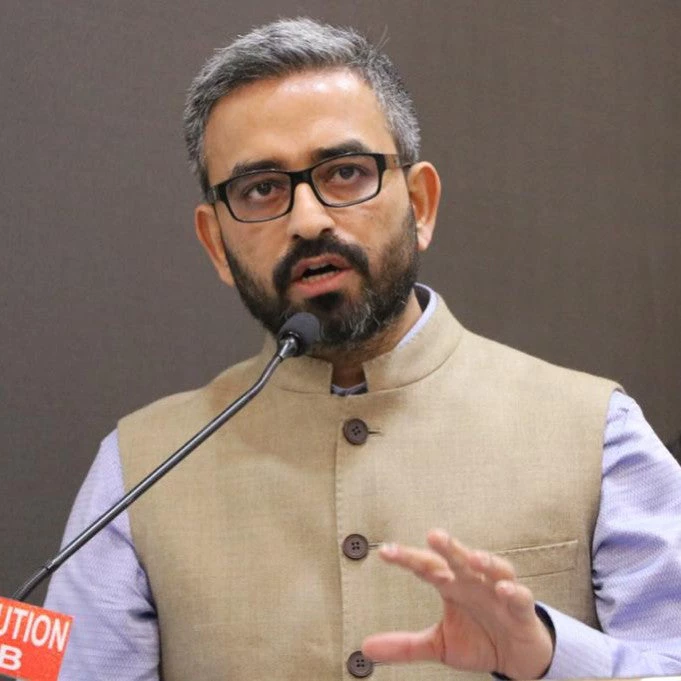 Road near border in India
Road near border in India
Road safety is a critical development priority for South Asia, impacting health, wellbeing and economic growth. Countries in the region must work together if they are to achieve the goal of halving road crash deaths by 2030. This blog is part of our Together for Road Safety campaign.
Raghuveer Thakur was 27 when he died in a road crash on the Mumbai-Nashik Highway. A car rear-ended the two-wheeler on which he was riding pillion and he succumbed to his injuries at the hospital. His family was not only emotionally devastated, but also pushed into economic distress. They had to wait for over 5 years before they received any compensation.
Such harrowing stories of poor families struggling financially after losing an earning member of the family to a road crash are much too common. In the absence of timely legal compensation and high medical expenses, families spend years in a vicious cycle of repayment, insecurity and debt.
India loses nearly 40,000 youth like Raghuveer (aged 25-35) every year. The country has 1% of the world’s vehicles but accounts for 11% of all road crash deaths . In the last decade, road crashes have killed 1.3 million (13 lakhs) people and injured over 5 million (50 lakhs) in India.
Road crashes are estimated to cost the Indian economy between 3 to 5 percent of GDP a year.

In addition to the human toll, road crashes lacerate countries’ economies by claiming millions of economically productive young lives. As reported by a World Bank Study, road crashes are estimated to cost the Indian economy between 3 to 5 percent of GDP a year.
Research has established that even in developed countries like the US, “improvements in road safety haven't been evenly shared”, with poor people bearing the brunt. In a diverse and developing country like India, road crashes are intrinsically linked to the victims’ class, gender, income and geographical location.
A new report by the World Bank and SaveLIFE Foundation “Traffic Crash Injuries and Disabilities: The Burden on Indian Society” quantifies these inter-linkages between poverty, socioeconomic realities, and road crashes in India. The report analyses data from four states—Uttar Pradesh and Bihar representing low capacity (poor) states; and Tamil Nadu and Maharashtra representing high capacity (rich) states.
Through quantitative surveys and qualitative data analysis, the report shows how low-income households in poor states struggle disproportionately compared to their peers in richer states while dealing with road crashes .
More than 75 percent of poor households who were affected by a road traffic crash reported a decline in their income due to the incident. The financial loss for the poor amounted to more than seven month’s household income, while it was equivalent to less than one month’s household income for rich households.
Poor families were also three times more likely to seek financial help, often borrowing from informal sources. Unequal insurance coverage and delays in accessing fair legal compensation further marred quick financial recovery among poor households , adding to decline in quality of life and emotional stress.
The survey also revealed that across all households the impacts of road crashes were unequal among family members, with women being the most vulnerable - both as victims and as caregivers . In the absence of support systems and safety nets, women have to carry the double burden of physical and emotional labour, often taking up low paying jobs outside the house. This leads to time poverty, i.e., working long hours without any choice.

But we remain optimistic as road traffic injuries and deaths can be prevented and the situation on roads can be improved . The report recommends priority reforms and actions that can help improve road safety in India. These policy-oriented approaches are aimed at saving lives and improving the ability of victims and their families to get back on their feet, including providing immediate financial, medical and legal aid.
We would also urge that, women often being disproportionately impacted, state governments launch special employment schemes for women and automatically enrol female-headed households in state programs. Increased women’s participation in road safety reforms and governance programs right from the district level can also go a long way.
Recent initiatives by the Government including the Motor Vehicles Amendment Act 2019 will go a long way towards fulfilling road safety commitment.
The Hon’ble Minister for Road Transport and Highways, Nitin Gadkari has affirmed to halve road crash deaths in the country by 2030 as per India’s commitment to the Stockholm Declaration. The recent initiatives by the Indian Government including the Motor Vehicles Amendment Act 2019 will go a long way towards fulfilling that commitment.
Road safety is a multifaceted challenge that requires long-term vision and commitment. It will take sustained efforts from all stakeholders coming together to leverage expertise and priorities. This includes governments, international partners like the UN, FIA, ADB, UK AID, Bloomberg Philanthropies and civil society organizations at the forefront of working with communities as advocates and practitioners on the ground.
The World Bank and SaveLIFE Foundation pledge to continue working together in collaboration with all partners to safeguard the future of all road users in India.
This article was originally published on Business Standard on March 27, 2021.




Join the Conversation